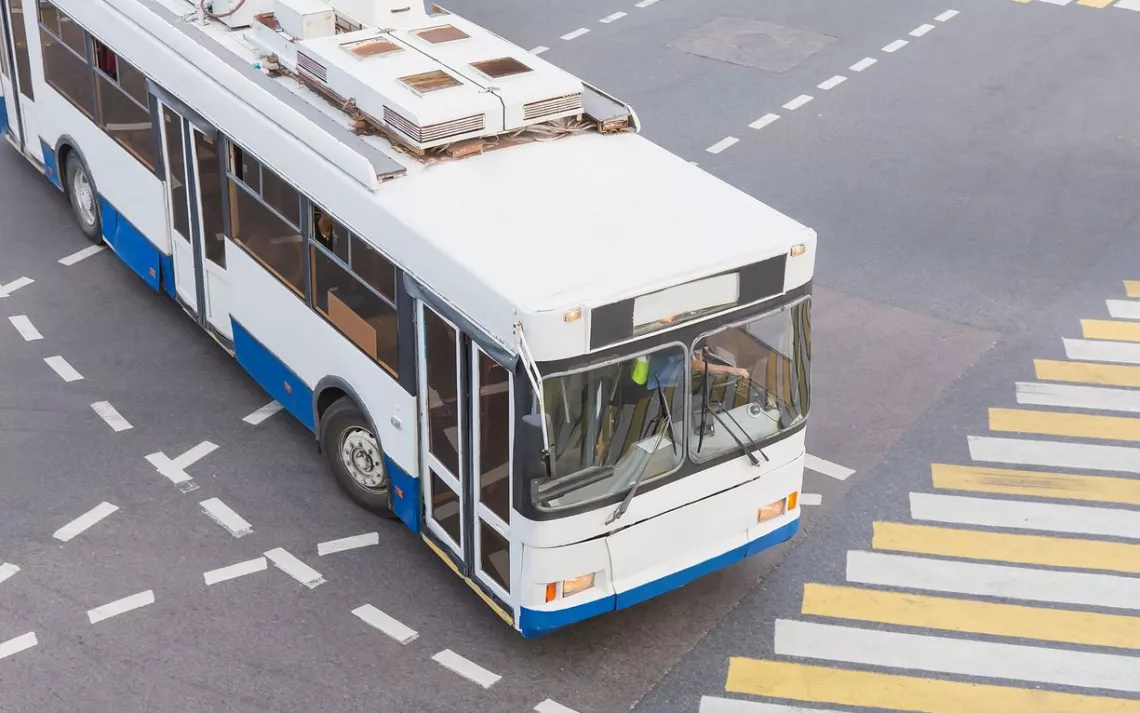When It Comes to Electric Buses, China Is Killing It
Every five weeks, the country adds the equivalent of London’s entire fleet to its streets

Photo by Apriori1/iStock
Editor's Note: A Los Angeles Times exposé published in late May revealed that BYD electric buses in Los Angeles have been plagued with poor performance and mechanical problems.
Last month, the Chinese city Shenzhen announced that it had replaced its entire fleet of diesel buses with electric ones. It is the first city in the world to achieve this feat, but a number of other big Chinese cities aren’t far behind. Putting electric buses on the street has been an important part of the Chinese government’s plan to reduce its notorious pollution problem. In 2015 alone, poor air quality was responsible for some 1.6 million deaths in that country.
In 2009, the central government chose Shenzhen and 12 other cities to be part of a pilot program to cut down vehicle emissions. Two years later, Shenzhen-based battery manufacturer BYD put its first batch of electric buses on the streets of Shenzhen, a move that encouraged other cities to order their own electric buses.
The shift from diesel to battery makes a huge difference in China’s public transportation system. “Electric buses consume around 73 percent less energy than buses that run on diesel,” said Han Ximin, a contributor who writes for the Shenzhen news site EyeShenzhen. In 2015, China’s goal for 2020 was to have 300,000 electric vehicles in operation, with two-thirds of them being buses.
But China’s electric bus fleet has grown more rapidly than expected, jumping from 12,760 fully electric buses in 2014 to 115,700 in 2016, and the government took this as a cue to set a more ambitious goal. After seeing the numbers swell to over 165,000 in 2016-17, communications minister Yang Xinzheng announced last year that the government expects to see 600,000 fully electric buses on China’s streets by 2020.
According to Bloomberg New Energy Finance (BNEF), around 17 percent of China’s entire bus fleet was electric as of 2017. That’s about 99 percent of the 385,000 electric buses operating around the world.
Every five weeks, Chinese cities including Shenzhen, Shanghai, Beijing, Guangzhou, and Chongqing swap out more of their gas-fueled buses for their electronic counterparts, and across the whole country, this accounts for an additional 9,500 electric buses every five weeks. This is larger than London’s current bus fleet, which is just over 8,000 buses, and is a trend that saves up to 4,750 barrels of diesel fuel from being consumed each day.
China now has several companies carrying out its plan to electrify the country’s bus fleets, including BYD. That company has built some 35,000 electric buses so far, and it now has the capacity to produce up to 15,000 a year, the company’s managing director Isbrand Ho told Bloomberg.
BYD is expanding globally as well. It now has an assembly factory in California, making its buses available to cities across the United States. Los Angeles, Santa Barbara, Baton Rouge, and Columbia, Missouri, have all ordered electric buses from BYD in the past two years.
According to the company’s own estimates, the BYD buses currently in use around the world have logged at least 10 billion miles, saving up to 1.8 billion gallons of fuel since 2011—enough to power 1,700,000 homes—and preventing about 16 million tons of carbon dioxide from being emitted.
The BNEF report predicts that by 2025, nearly half of the world’s buses will be electrified, reaching 1.2 billion buses—triple fold from 2017’s 386,000 buses. With support from its government and the collaboration between cities, China will be leading this growth, with its manufacturers making 99 percent of the world’s electric buses. Germany, the Netherlands, Poland, Chile, Canada, the United Kingdom, Taiwan, South Africa, Japan, and Thailand are among the countries that already have BYD’s electric buses rolling down their streets.
 The Magazine of The Sierra Club
The Magazine of The Sierra Club



